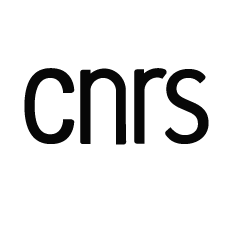Near field - SEM
Presentation
The "Microscopies" platform allows for the observation and characterization of most materials studied within UCCS. The platform is divided between electron microscopy and atomic force microscopy or, more generally, local probe microscopy.
This platform includes a scanning electron microscope enabling the observation of all types of samples (conductive, insulating, or biological) and the identification and quantification of elements present through energy-dispersive X-ray spectroscopy (EDS) or micro-X-ray fluorescence spectroscopy. It also features three local probe microscopes providing access to topography in three-dimensional space as well as certain physical properties of the material (conductivity, magnetism, piezoelectricity, etc.) depending on the probe and the measured interaction, all at the nano-scale.
Access to the equipment is potentially available after individual training and with approval from the scientific and technical managers.
![[Translate to English:] MEB SU3800 Hitachi avec détecteur Xflash Brucker](/fileadmin/_processed_/b/a/csm_MEB_SU3800_b7eb8a396a.jpg)
The Pressure-Controlled Scanning Electron Microscope (SEM) coupled with a micro-X-ray fluorescence spectroscopy system enables both observation (in secondary and backscattered electrons) and analysis of emitted X-rays (under dual electron and photon excitation) from all types of samples (conductors, insulators, biological). With a Peltier stage installed on this equipment, observation of samples particularly sensitive to outgassing (hydrated and biological samples) is achievable. It is possible to visualize the surface morphology of a wide variety of nature from the micrometer to nanometer scale, benefiting from the SEM's large depth of field.
The micro-X-ray fluorescence spectroscopy system, consisting of an X-ray generator and an EDS spectrometer, allows for point mode analysis (X-ray beam diameter of about 30 μm) for qualitative and quantitative analysis of samples with a detection limit of around a few tens of ppm in the most favorable cases (heavy element in a light matrix), with X-ray emission depth ranging from a few micrometers to a few millimeters depending on the analyzed elements and matrix. This technique complements EDS spectroscopy under electron bombardment, which has an analytical point mode detection limit of about 500 to 1000 ppm with an X-ray emission depth of a few micrometers mainly dependent on the energy of the electron beam. By combining both excitation methods, it is possible to achieve complete sample characterization. Spatial mapping of the chemical distribution of elements present in the sample is also accessible for both excitation modes.
Equipment: Hitachi SU3800 Pressure-Controlled SEM (tungsten filament)
Bruker X trace X-ray generator
Bruker Quantax EDS spectrometer
Deben cooled stage
Possible sample preparation (Au-Pd metallization)
![[Translate to English:] AFM Multimode 8 (Bruker)](/fileadmin/_processed_/b/a/csm_AFM_Multimode_8_daca2214c5.jpg)
![[Translate to English:] AFM NX10 (Park Systems)](/fileadmin/_processed_/5/0/csm_AFM_NX10_dfd4e35843.jpg)
Atomic Force Microscopy (AFM) is a surface characterization technique for materials. It belongs to the family of near-field microscopies and provides access to the surface morphology of samples at the sub-micrometer scale, as well as to physical properties such as chemical, mechanical, magnetic, or electrical properties, for example.
The general principle of AFM is based on bringing a nanometric tip attached to a lever (tip + lever = AFM probe) to a distance of a few nanometers or directly into contact with the surface under study, and detecting interaction forces that occur between the atoms making up this tip and those of the surface.
Piezoresponse Force Microscopy (PFM) is an electrical mode derived from AFM based on the inverse piezoelectric effect, allowing access to the piezoelectric and ferroelectric properties of materials. It operates in "contact" mode using an electrically conductive tip and enables imaging of ferroelectric domains at high resolution (nanoscale) in a non-destructive manner. Furthermore, manipulation of the domains is also made possible through the AFM tip. It is also possible to use PFM in spectroscopic mode (fixed tip at the material surface) to access the switching properties and electromechanical activity of the probed domain under the tip.
The Microscopies platform has three AFM microscopes: Bruker Multimode 8, Park Systems NX10, and Asylum Research MFP-3D.

